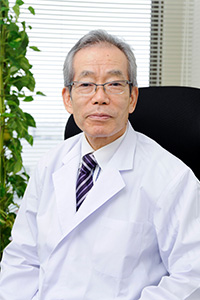Atopic dermatitis and skincare
Maintaining and restoring barrier function: The role of skincare
Epidermal keratinocytes are constantly bombarded by environmental irritants, and enzymes repeatedly slough off the outermost layer. Because of that, keratinocytes in the basal layer at the very bottom of the epidermis break off, differentiate, and eventually become part of the stratum corneum (this is the epidermal cell turnover process).
The antimicrobial factors play a key role in the barrier function performed by epidermal keratinocytes. When bacteria or other sources of infection attempt to penetrate the skin, antimicrobial factors fights back with a native and reactive response. In recent years, it has been demonstrated that the substances that make up epidermal keratinocytes also have anti-inflammatory action; of particular focus have been the antimicrobial peptides (AMPs) that work to regulate the immune system. Research on human β-defensins (hBDs) and cathelicidins (LL-37) has been moving ahead ever since the discovery of human β-defensin 2 in 1997.Additional discoveries besides β-defensin 2 include hBD3, psoriasin, and dermosidin—substances primarily produced in the granular layer of the epidermis and stored in lamellar bodies. They are also actively generated in response to bacterial infection. Meanwhile, hBD2 can be created in macrophages and dendritic cells as well. LL-37 also demonstrates antibacterial action while working to speed the healing of injuries by making keratinocytes more mobile.
Patients with atopic dermatitis generate AMPs in response to infection, but compared to those with healthy skin, it is frequently not in quantities sufficient to eradicate the source of the infection.
Skin that experience repeated cell turnover maintains its structure and functioning, meaning that central and peripheral nerves, internal secretion, and the immune system work properly to coordinate its barrier function. If internal and/or external irritation becomes too severe, or if there is a loss in adaptive capacity due to skin disease or aging, it stresses the skin and hinders the proper functioning of the natural and acquired immunity in the epidermis. The skin also loses its ability to maintain a weakly acidic pH, which in turn causes changes in its standing bacterial layer. This triggers inflammation and infection. Poor barrier function in the stratum corneum correlates with an increased risk of atopic dermatitis.
There are many ways to care for the skin in order to help maintain healthy functioning, and they can be divided into three main categories: (1) eliminating unnecessary substances that adhere to the inside or outside of the skin surface; (2) protecting the skin from dryness, UV rays, and harmful infectious substances or molecules by maintain its barrier function; and (3) restoring compromised barrier function and skin structure not only from acute skin damage, but also from chronic irritation—in other words, the effects of aging, photoaging, and skin disease 27.
With atopic dermatitis, many patients essentially have a compromised barrier function, so it’s important to quickly and effectively eliminate microscopic allergens and infectious substances. The skin of infants in particular has not yet fully developed and has a strong tendency to dry out, making them more likely to experience reduced barrier function—so proper moisturizing is a must. The morbidity risk with atopic dermatitis is particularly high in nursing infants, and regular bathing is not sufficient to remove the adhered substances on the skin surface. Ideally, treatments involving soap suds should be used to effectively clean their skin. Older children also need to apply moisturizer to their skin after getting out of the bath and before moisture evaporates from the epidermis, since improving moisturizing function helps prevent atopic dermatitis. In terms of moisturizers, insurance-based medical treatment typically uses heparinoid preparations or vitamin A/vitamin E lotions and creams (urea preparations and Hirudoid are the most common examples). But because urea preparations may irritate infant skin, it is best to avoid them. Both in theory and in clinical practice, creams containing natural ceramides are the most recommended treatment 28. These creams target both the abnormalities in filaggrin proteins between keratinocytes that are critical for keeping skin hydrated as well as problems with the quality and quantity of ceramides 29.
Atopic dermatitis in teens and adults also requires the use of a moisturizer to prevent skin from drying out in the winter air and to keep rashes from worsening. Moisturizers also help alleviate itchiness. It is possible to use Vaseline or its refined version, Propeto, but while these products do prevent moisture evaporation, they are also very sticky and reduce patients’ quality of life. The application of heparinoid creams is quite effective, but whenever possible, it is best to use creams that contain natural ceramides.
As mentioned earlier, the purpose of skincare for those with atopic dermatitis is to reduce itching so that the patient does not scratch the skin. Scratching breaks down the barrier function and worsens inflammation. Antihistamine preparations are therefore important as a means of indirect skincare to control scratching behaviors.
In recent years, it is reported that qualitative abnormalities in filaggrin that damage barrier function are the main cause of atopic dermatitis. For this reason, we are developing topical preparations that activate filaggrin production in keratinocytes. Though they have not yet made it to clinical settings, they do appear to be a promising solution 30.
At present, then, it is important that we not only treat obvious cases of atopic dermatitis, but also work to prevent atopic dermatitis that does not require adrenocortical hormones or immunological preparations by working daily to maintain and improve skin barrier function. And one of the most effective ways to do this is to apply moisturizing creams and lotions containing natural ceramides.

Dr. Masamitsu Ichihashi
Professor Emeritus, Kobe University
Dr. Ichihashi completed his doctoral program at the Kobe University Graduate School of Medicine. He specializes in dermatology, with a particular interest in researching how UV rays affect the skin over many years of exposure. He has also trained outside of Japan in dermatology and dermatological treatments.
